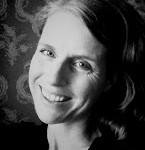Contributing Writer for Wake Up World
While drug use among teens in the U.S. has dropped between 2002 and 2013, nearly 25 million youth aged 12 and older still use illicit drugs. Marijuana is the most common drug of choice, where in 2013 alone, 7.5 percent of young Americans over the age of twelve (almost 20 million) have used marijuana, a jump of about 6 percent from 2007. Abuse of other drugs — including cocaine, heroin, hallucinogens and prescription painkillers — remained unchanged from 2012 to 2013.
When we look at where America stands overall as far as substance abuse, for both teens and adults, the picture is bleak. “U.S. Lead the World in Illegal Drug Use” shouts CBS News, “North America Has A Massive Meth Problem” declares Business Insider. And BBC News ominously reports on “The horrific toll of America’s heroin ‘epidemic.’”
According to a World Health Organization survey of 17 countries, the U.S. topped the list for illicit drug use, where Americans were four times more likely to report using cocaine in their lifetime than the next closest country, New Zealand (16% vs. 4%). Use of marijuana in the U.S. was also the highest in the world at 42.4%, compared to 41.9% in New Zealand.
Years ago, I was researching the need for nutritionists in California drug rehab centers. Shocked by the sheer number of such facilities, I quickly realized there’s a dark underbelly of drug addiction in America, one most of us aren’t aware of — until we have personal experience with a friend or family member with a drug problem, or we’re a victim of a drug-fueled crime.
According to the National Institute on Drug Abuse, addiction to tobacco, alcohol, prescription opioids and illicit drugs cost U.S. taxpayers over 740 billion annually in costs related to crime, lost work productivity and health care. Although a good chunk of money is thrown at the problem — from prevention programs to rehabilitation — substance abuse in the U.S. is still spiraling out of control.
Some blame our crumbling social structures like families, others point a finger at affluence (or the opposite, poverty) — and all would be right. But the question is: what to do about it?
Many nations around the world are turning to Iceland for answers, where a unique program focused on prevention is yielding outstanding results.
In the 1990s, Iceland was seeing a sharp increase in drug and alcohol abuse among the country’s teenagers. Needless to say, officials and parents were worried.
“You couldn’t walk the streets in downtown Reykjavik on a Friday night because it felt unsafe,” said Harvey Milkman, a Reykjavik University psychology professor. “There were hordes of teenagers getting in-your-face drunk.”
And yet today, Iceland tops the European table for the cleanest-living teens.
“The percentage of 15- and 16-year-olds who had been drunk in the previous month plummeted from 42 percent in 1998 to 5 percent in 2016. The percentage who have ever used marijuana is down from 17 percent to 7 percent. Those smoking cigarettes every day fell from 23 percent to just 3 percent.” [source]
How did Iceland manage such a complete reversal of drug use?
“The way the country has achieved this turnaround has been both radical and evidence-based, but it has relied a lot on what might be termed enforced common sense,” writes Emma Young for Mosaic Science.
Laws were changed. The purchase of tobacco under the age of 18, and alcohol under the age of twenty, was now illegal.
A curfew was put in place, prohibiting youth between the ages of 13 and 16 from being outside after 10 PM in winter, midnight during summer.
But the biggest reason for the sharp downward turn of substance abuse was due to increased family time and more emphasis on extracurricular activities.
“Parents were encouraged to attend talks on the importance of spending a quantity of time with their children rather than occasional ‘quality time’, on talking to their kids about their lives, on knowing who their kids were friends with, and on keeping their children home in the evenings.” [source]
State funding also increased to support sport and art programs, as well as other clubs. In Reykjavik, families are given a Leisure Card, worth 35,000 krona ($3,902 US), for each child to be used for recreational activities.
Interestingly, Young reports that after the changes were implemented, “the percentage of kids aged 15 and 16 who reported often or almost always spending time with their parents on weekdays doubled – from 23 percent to 46 percent – and the percentage who participated in organized sports at least four times a week increased from 24 percent to 42 percent. Meanwhile, cigarette smoking, drinking and cannabis use in this age group plummeted.”
Milkman, whose research was foundational for the development of the Icelandic program, believes people are on the threshold for abuse “before they even took the drug, because it was their style of coping [with stress] that they were abusing.”
Kids who are “active confronters” of stress are after a rush — whether it be stealing or through stimulant drugs, while sedative drugs like heroin and alcohol are appealing to those who want to numb anxiety.
His idea sparked another: “Why not orchestrate a social movement around natural highs: around people getting high on their own brain chemistry – because it seems obvious to me that people want to change their consciousness – without the deleterious effects of drugs?”
So, with a $1.2 million government grant, Milkman and his team developed a program called Project Self-Discovery in Colorado, U.S. that offered a range of different classes for at-risk kids — music, dance, hip hop, art, martial arts — which would trigger alterations in brain chemistry to give them a natural high, whether it was a reduction in anxiety or a rush. The kids also received life-skill training to help improve thoughts about themselves and others.
After the success of Project Discovery was established, Milkman was invited to Iceland in 1991 to talk about his work, and later became a consultant for a residential drug treatment centre for adolescents in Tindar, Iceland. “It was designed around the idea of giving kids better things to do,” he said. By 1999, the nationwide program was established and teens were on there way to finding a natural and healthy high without the use of drugs.
Would this approach work in the U.S.? Milkman says it all depends on the resources of individual communities, because it would be difficult to implement on a federal level. But when we consider the annual price tag of substance abuse in this country, how can we afford not to?
Likewise, Emma Young asks: “In Iceland … the process, brought families closer and helped kids to become healthier in all kinds of ways. Will no other country decide these benefits are worth the costs?”
Article sources:
- https://mosaicscience.com/story/iceland-prevent-teen-substance-abuse
- https://www.ncbi.nlm.nih.gov/pubmed/26614684
- https://eric.ed.gov/?id=EJ777007
- https://archives.drugabuse.gov/about/welcome/aboutdrugabuse/magnitude/
- https://www.ncjrs.gov/ondcppubs/publications/pdf/economic_costs.pdf [PDF]
- http://www.cbsnews.com/news/us-leads-the-world-in-illegal-drug-use/
- http://time.com/4274651/obama-opioid-addiction-summit/
- http://www.worldtribune.com/how-iceland-solved-its-teens-substance-abuse-problem/
- https://www.drugabuse.gov/related-topics/trends-statistics
Previous articles by Carolanne Wright:
- New Research Links Hand Sanitizer Use With Thyroid Cancer
- Renowned Harvard Psychologist Says ADHD is Largely a Fraud
- Hyperbaric Oxygen Treatment Reverses Fibromyalgia in 70% of Patients, Researchers Find
- Wealth and Social Media Breed Narcissism and Lack of Empathy, Says New Research
- Over 100 Scientific Studies Agree: Cannabis Annihilates Cancer
- If You Care About Animals and the Earth, Here’s Why You Need to Boycott Palm Oil Immediately
- Latest Research on CBD Oil Offers New Hope for Healing Leaky Gut Syndrome and Autoimmune Disorders
- Scientific Breakthrough: Alzheimer’s Ultrasound Therapy Fully Restores Memory Function in Mice
- Why You Should Have a Himalayan Crystal Salt Lamp in Every Room of Your House
- A Glorious Fight Against Food Waste: Supermarket Chain Celebrates “Ugly” Produce — With Stunning Results
About the author:
 Carolanne enthusiastically believes if we want to see change in the world, we need to be the change. As a nutritionist, natural foods chef and wellness coach, Carolanne has encouraged others to embrace a healthy lifestyle of organic living, gratefulness and joyful orientation for over 13 years
Carolanne enthusiastically believes if we want to see change in the world, we need to be the change. As a nutritionist, natural foods chef and wellness coach, Carolanne has encouraged others to embrace a healthy lifestyle of organic living, gratefulness and joyful orientation for over 13 years
Through her website Thrive-Living.net she looks forward to connecting with other like-minded people from around the world who share a similar vision. Follow Carolanne on Facebook, Twitter and Pinterest.
Source Article from https://wakeup-world.com/2017/06/14/iceland-taught-kids-how-to-get-high-naturally-and-teenage-substance-abuse-plummeted/
Related posts:
Views: 0
 RSS Feed
RSS Feed

















 June 14th, 2017
June 14th, 2017  Awake Goy
Awake Goy 
 Posted in
Posted in  Tags:
Tags: 
















